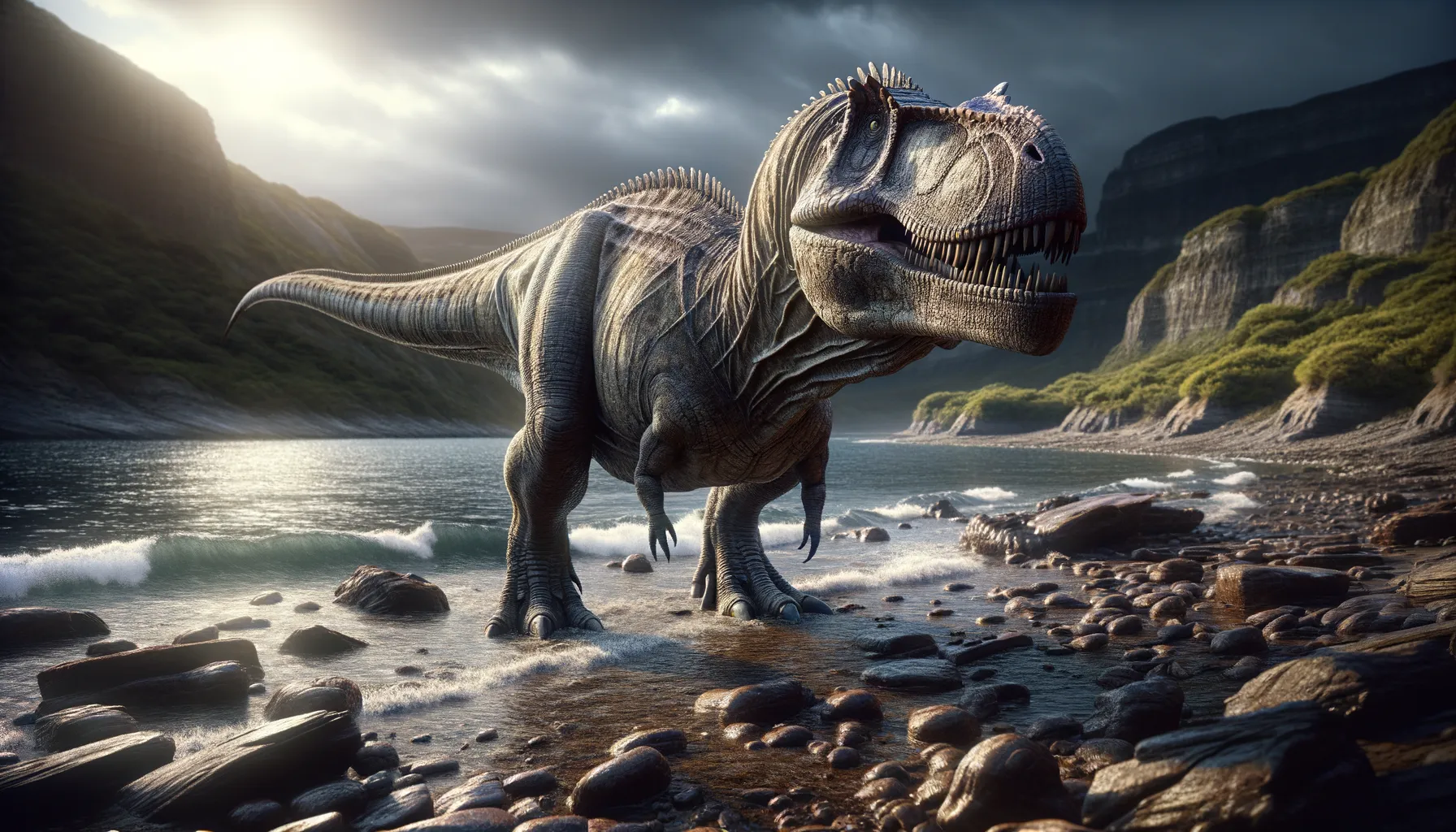
Aggiosaurus
Aquatic predator of ancient coastal realms.
Period
Jurassic
Length
Reaching up to 7 meters long.
Height
About 2 meters tall.
Weight
Approximately 1 ton.
Aggiosaurus was a crocodile-like dinosaur known for its elongated body and robust jaws, which likely made it a formidable predator in its aquatic environment. Living during the Jurassic period, it roamed near coastal areas in search of prey. Despite limited fossil evidence, its discovery provides critical insights into the diversity of prehistoric marine reptiles.
Diet
Aggiosaurus primarily fed on fish and other small marine creatures. With its strong jaws, it could capture and crush its prey easily.
Hunting
Aggiosaurus likely ambushed its prey, using its streamlined body to glide through water stealthily. It relied on the element of surprise along with its sharp teeth to catch unsuspecting victims.
Environmental challenges
Aggiosaurus faced challenges such as competition for food with other marine predators. Fluctuations in sea levels and changes in climate conditions would have affected its habitat availability. Like many aquatic creatures of its time, it had to navigate the dangers posed by larger predators in its ecosystem.
Speed
Relatively slow-moving.
Lifespan
Possibly several decades.
First discovery
Found in the 19th century in France.
Fun Facts
- Aggiosaurus was a marine reptile from the Jurassic period known for its long, slender body.
- It lived around 160 million years ago in what is now Europe, making its home in the ancient seas.
- Despite its name, Aggiosaurus was not actually a dinosaur but a type of ichthyosaur.
- Fossils show that Aggiosaurus had sharp teeth, indicating it was a carnivorous hunter.
- The first fossils of Aggiosaurus were discovered in France in the 19th century.
- Aggiosaurus was relatively small compared to other marine reptiles, measuring about 2 meters in length.
- Its streamlined body and paddle-like limbs suggest it was an agile swimmer, able to chase down prey easily.
Growth and Development
Aggiosaurus grew from small hatchlings to formidable aquatic hunters over several years. As it matured, its body adapted to more demanding hunting tasks, enhancing its survival. The development phases were crucial for honing its predatory skills and ensuring survival in the harsh Jurassic seas.
Habitat
Aggiosaurus inhabited coastal waters, where it had access to abundant marine life. It preferred shallow waters, which provided both food and shelter from larger predators. Its environment was rich in biodiversity, serving as a dynamic habitat for various marine species.
Interaction with other species
Aggiosaurus may have competed with other marine reptiles for food. Opportunistic scavenging could have led to encounters with other predators. Coopetition and minor territorial disputes shaped its interactions within the ecosystem.
Natural lifespan
Aggiosaurus lived for several decades in the wild.
Reproduction
Reproduction likely involved laying eggs in sheltered coastal areas. The young would have been vulnerable to predators, necessitating protective measures from the adults. As with many reptiles, breeding was seasonal and influenced by environmental conditions.
Social behaviour
Aggiosaurus was likely solitary, focusing on individual survival and hunting. When interacting with others of its kind, it might have displayed territorial behaviors. However, limited evidence suggests occasional cooperation in specific situations like group hunting.
Fossil locations
Fossil remains of Aggiosaurus have been discovered primarily in France. These discoveries contribute valuable information regarding its distribution and habitat preferences. The few specimens found provide insight into the evolutionary path of marine reptiles during the Jurassic.
